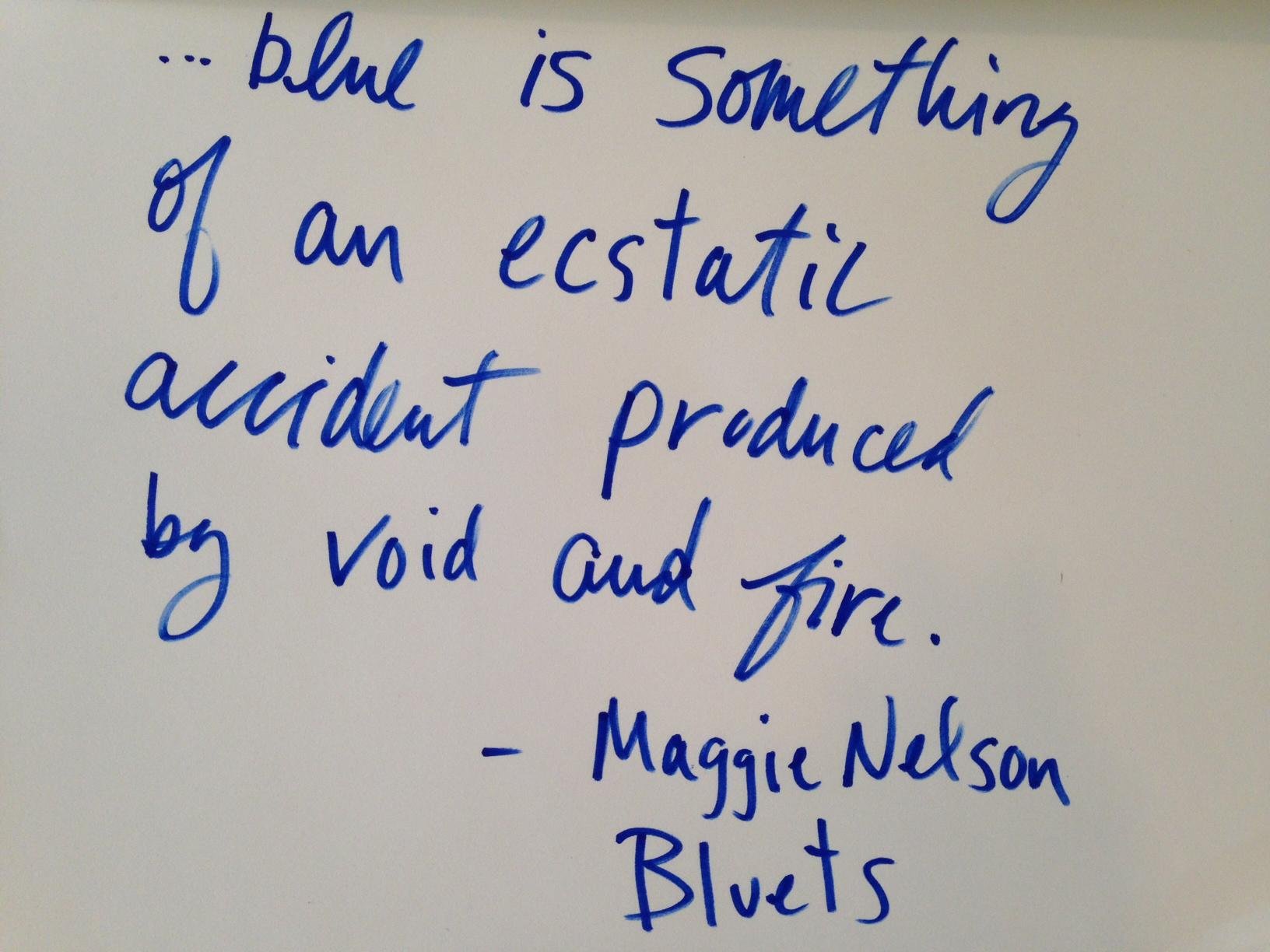THE COLOR BLUE
“And so I fell in love with a color–in this case, the color blue–as if falling under a spell,” writes Maggie Nelson in her experimental lyric essay Bluets. Through poetic fragments and vignettes, Nelson offers insight into how her obsession with the elemental hue falls into a long tradition of writers, philosophers, and artists who have found themselves similarly consumed.
Like her other books, Bluets weaves together Nelson’s own experiences with scientific facts, sociological studies, and various musings all tying back to blue and its captivating nature. She situates Goethe’s Theory of Colors alongside agitated feelings regarding a sexual relationship and nods to Leonard Cohen and Lucinda Williams near details about her friends’ physical agony following an accident. The references are vast and eclectic and capture the way a singular color has attracted such an eclectic cast of admirers.
Influences
Nelson packs a remarkable array of references in the slim Bluets, and although we recommend reading the work in its entirety to fully understand her brilliance, we’re particularly drawn to the following influences:
Filmmaker and artist Derek Jarman was known for his unexpected use of color, which he recounts in Chroma, a book of theory and poetry that reflects on the full prismatic spectrum and the emotions they inspire.
Also taking up the topic is Gertrude Stein’s Tender Buttons, an enigmatic book that considers everyday objects and their physical properties. Stein flexes her ties to modernist art in the text, as well, which has been described as “a masterpiece of verbal Cubism.”
Think about
Despite its popularity, blue is the rarest color on the planet. Why? Partially because there “isn’t a true blue pigment in nature.”
Further reading
Petra Bachmaier and Sean Gallero, the artists behind Luftwerk Studio, devote their practice to color and its ability to change based on perception. One of their recent works reinterprets the 1789 instrument known as the cyanometer, which was used “to demonstrate that the color of the sky grows darker with increases in elevation.” Although scientifically dubious, the device offers a poetic vision of the human-nature connection.
For a similarly organic approach, pick up Annie Dillard’s Pilgrim at Tinker Creek, which consistently returns to blue as a source of beauty and calm, or Vladimir Nabokov’s synesthetic memoir, Speak, Memory.
Written by So Textual






